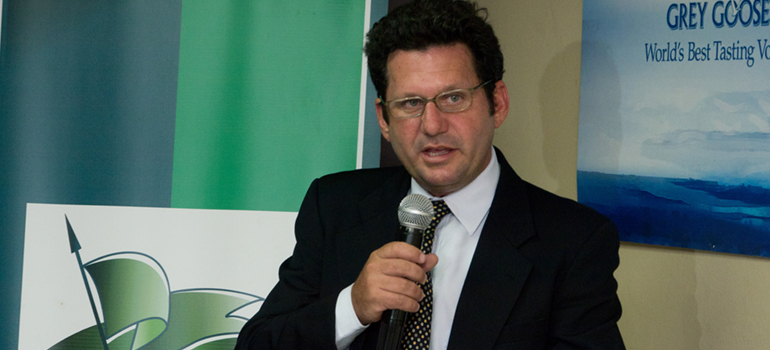Mark Hart controlled Caribbean Producers is being brought to market on Friday by leading stockbroker Mayberry at a historic tax charge adjusted price earnings (PE) ration of just under 14, based on June 30th 2010 profit before tax of US$1.84 million.
Normally, the price earnings ratio would be calculated on the profit after tax, which at June 30, 2010 was US$1.19 million, implying a seemingly high PE of over 20 times earnings. However, as with other recent Junior Venture Exchange offerings, brokers use an adjusted PE that effectively adds back the tax charge, in CPJ’s case US$650,687, to the overall earnings number. This reflects the generous corporate tax incentives available to companies listing on the Junior Venture Exchange, namely the first five years being tax free, and the second five years paying a reduced corporate tax of 50 per cent of the normal rate. In short, they use the profit before tax, divided by the number of shares outstanding post offer, in this case 1.1 billion, of which exactly 20 per cent is being listed to raise just offer $425 million.
Co-chairman of Caribbean Producers Jamaica (CPJ) Mark Hart presenting at a press conference announcing CPJ’s intention to list on the JSE Junior Stock Exchange at the CPJ headquarters in Montego Bay in May.
[Restore Description]
1/1
For the first six months of the current financial year ending December 31, 2010 the company made a profit of US$526,911, compared with a profit of only US$13,046 for the comparable six month period ending on December 31, 2009. Profit before taxation was US$810,632 compared with a profit before tax of US$20,071. The sharp improvement in profit before tax for the first six months of the financial year suggests that the full year results should be substantially above the previous year even if second half profits were merely the same as last year, or at least US$2.63 million, implying that on a current valuation basis the company is really going to market a high single digit PE ratio based on current earnings for the financial year just ended.
However, a high growth company such as Caribbean Producers should be valued on future earnings. In the five years between 2006 and 2010, revenue, nearly doubled from US$33 million to US$61.34 million, or an annual compound growth rate of 17 per cent. As this is calculated in US dollars, this is real growth of almost 15 per cent per year after US inflation.
Profit before tax has increased by an even more spectacularly between 2006 and 2010, from just over US$446,000 to nearly US$1.845 million, or a compound annual growth rate of 42.5 per cent, almost exactly in line with our very conservative projected increase in profit before tax to June 2011 of US$2.63 million. A similar level of earnings growth for the next calendar year would make the current offering price look cheap however. In analysing CPJ, it is important to bear in mind that company is leveraged to the tourism sector, so that its first quarter (June to September) is the weakest, and its strongest period is between December to April, so the second six months is the strongest (this includes the very strong January to March quarter).
The company is highly leveraged (reason for its exceptional return on equity of 57 per cent in 2010) but most of the loans are related party loans, which although paying interest at market rates, for all practical purposes could be regarded as equity. As proof of this, the entire offering is fully underwritten by Good Hope Holdings, a company connected to Tony Hart, according to the offering memorandum. Perhaps more importantly, earnings before interest, taxes, depreciation and amortisation (EBITDA) of US$4.345 million for financial year June 2010 is likely to increase significantly over the next few years as interest and depreciation costs decline giving the company significant financial flexibility to pay down debt or more likely continue with their previously announced aggressive expansion plans.
—-
Jamaica Observer



